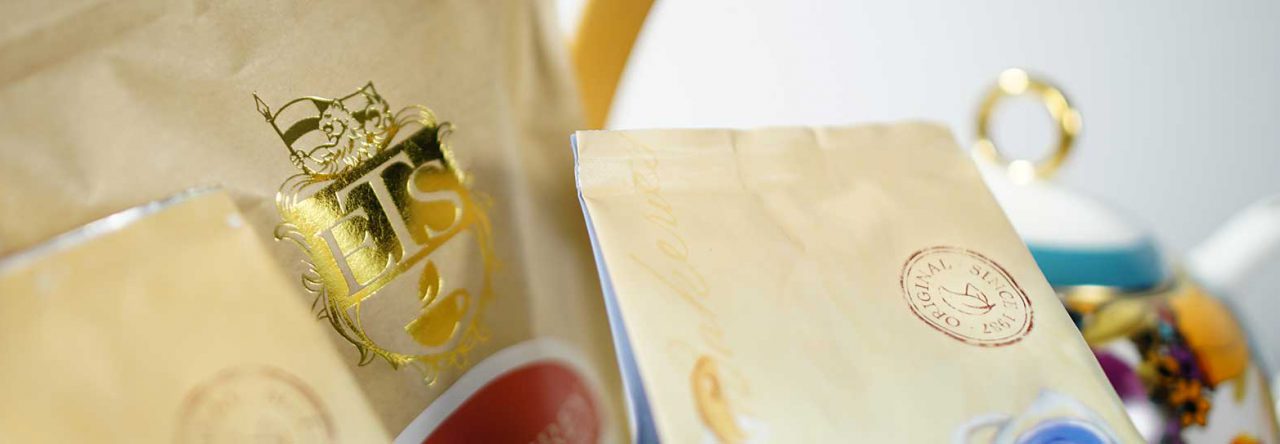
More teas from Japan (continued from Round 1):
- Gabarancha (GamaAminoButyricAcid increased tea) — fresh raw tea-leaves incubated in nitrogen gas (anaerobically treated) before ordinary manufacture to increase hypotensive effect.
- Genmaicha — A blend of bancha green tea and Genmai (roasted rice grain). See Going Genmaicha.
- Goishicha — Made in Tosa. After fermenting and drying it is cut into small compressed cubes and used by some to drink and by others to make a tea porridge.
- Gyokuro (Jade Dew) — Sencha grown in the shade and thus with the most subtle in flavor (reflected in the prices it commands), plus higher caffeine content and chlorophyll; regarded as the highest grade of tea made in Japan. See Gyokuro Face-off.
- Hachijuhachiyacha (“88th-night”) — Picked around May 2, great flavor, minimal bitterness, and high amino-acid content.
- Hojicha or Houjicha — Roasted green tea (bancha and kukicha) that is “toasty” and slightly reminiscent of oolong; virtually no caffeine; very little bitterness, aromatic, light on the palate, refreshing. The main types are light and deep-fried (deeper roast aroma and taste). Distinctively clear red appearance in the liquid. Goes with any food, particularly oily ones, so is often an after-dinner tea. Inexpensive, but rarely seen in the West.
- Hukamushi (Fukumushi) (“deep-steamed tea” or “misty green tea”) — A heavily steamed green tea with a slightly cloudy liquid. This steaming stage of the processing is prolonged and reduces bitterness and makes for a more mild yet full-bodied and less “green” smelling tea with very little astringency. Virtually unheard of outside Japan.
- Kabusecha (“covered tea”) — Similar to Gyokuro, but only semi-shaded (grown in about 45% shade for 20 days before harvest). A more delicate flavor that is sweeter then Sencha.
- Kamairi-cha (“pan-fired tea” or “Chinese green tea”) — Pan-fried in hot iron pans of up to 300°C instead of steamed, and richly flavored (sweet, mildly roasted). Can be processed as a pelleted leaf or flat leaf. The regions of Sechibaru and Ureshino in the south of Japan are two of the most respected for their pan-fried processing.
- Kancha (“cold-season tea”) — Mature big leaves plucked in January and steamed and sun-dried but not rolled.
- Kenkoocha (“healthy tea”) — processed tea leaves mixed with herbs.
- Konbucha — A beverage made from soaking konbu (seaweed kelp) in hot water. See Kombucha.
- Kokeicha — Pine needle-like shaped leaves with a soft, aromatic, and typical green tea taste. The green tea is crushed into powder, apparently blended with rice starch, kneaded, extruded, and then dried.
- Kukicha (“stalk tea” or “stick tea”) — An emerald leaf and pale green stalk blend made from the stalk fractions of gyokuro and sencha. Those stalks can only have one bud and three leaves (those leaves are made into gyokuro and high graded sencha). Light flavors, and fresh, green aroma with a very light yellow-green color (the thinner and less green the infusion; the higher is the quality of the tea). Inexpensive but rarely seen outside of Japan.
- Kuradashi-Sincha — The best Spring tea leaves stored in temperature controlled warehouses after processing until Autumn.
Don’t miss the wrap up in Round 3.
© Online Stores, Inc., and The English Tea Store Blog, 2009-2014. Unauthorized use and/or duplication of this material without express and written permission from this article’s author and/or the blog’s owner is strictly prohibited. Excerpts and links may be used, provided that full and clear credit is given to Online Stores, Inc., and The English Tea Store Blog with appropriate and specific direction to the original content.



Leave a comment